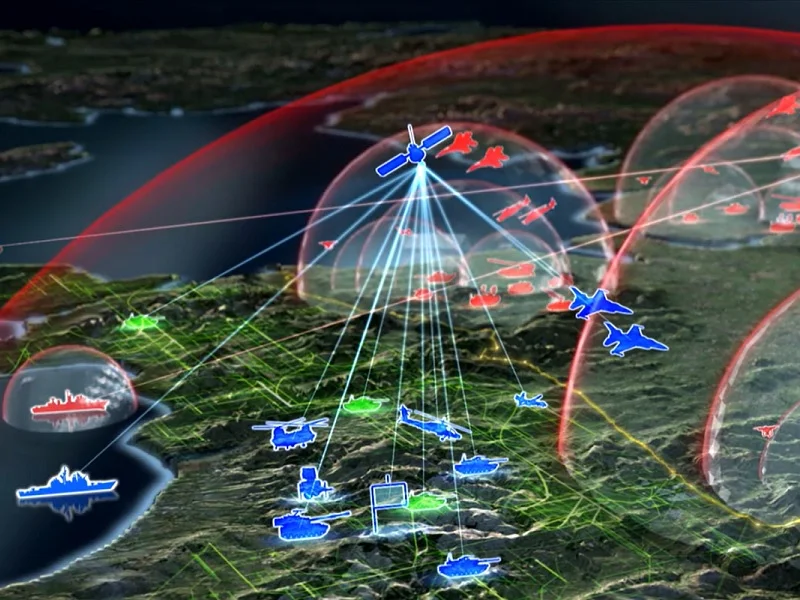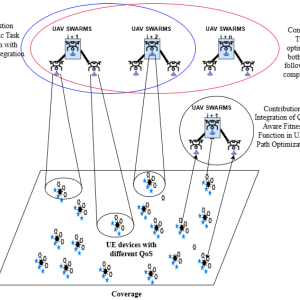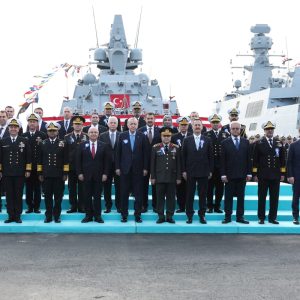In the modern era of Satellite Communications in Multi-Domain operations have become pivotal in ensuring seamless connectivity and enhanced operational capabilities. As the battlefield evolves, integrating various domains—land, sea, air, space, and cyber—requires an advanced and robust communication infrastructure. Satellite communications stand at the forefront of this integration, offering unparalleled advantages that are crucial for mission success.

The Evolution of Satellite Communications in Defense
Historical Context and Development
Satellite communications have undergone significant evolution since their inception. Initially developed during the Cold War for strategic military purposes, SATCOM has transformed into a critical component of modern defense infrastructure. Early satellites provided basic communication capabilities, but advancements in technology have exponentially increased their capacity, reliability, and scope.
Technological Advancements
The shift from analog to digital communications marked a major milestone in the development of satellite technologies. Modern satellites are equipped with high-frequency transponders, advanced encryption mechanisms, and high-throughput payloads that enable secure and efficient data transmission. The introduction of Low Earth Orbit (LEO) satellites has further revolutionized SATCOM, providing low-latency, high-bandwidth communication essential for real-time operations.
Key Benefits of Satellite Communications in MDO
Global Coverage and Connectivity
One of the primary advantages of satellite communications is their ability to provide global coverage. Unlike terrestrial communication systems, which are limited by geography and infrastructure, satellites can deliver connectivity to remote and inaccessible regions. This is particularly vital in military operations where forces are often deployed in challenging environments.
Real-Time Data Transmission
In multi-domain operations, the need for real-time data transmission is critical. Satellite communications facilitate instantaneous sharing of intelligence, surveillance, and reconnaissance (ISR) data across various platforms. This real-time data exchange enhances situational awareness, enabling commanders to make informed decisions rapidly.
Interoperability and Integration
Modern military operations require seamless interoperability between different branches of the armed forces and allied nations. Satellite communications provide a unified platform that ensures interoperability and integration of communication systems across different domains and forces. This integration is essential for coordinated and synchronized operations.
Enhanced Security
Security is paramount in military communications. Satellites offer secure communication channels with advanced encryption and anti-jamming capabilities. This ensures that sensitive information remains protected from adversaries, maintaining the integrity and confidentiality of mission-critical data.
Applications of Satellite Communications in Multi-Domain Operations
Command and Control (C2) Systems
Satellite communications play a crucial role in Command and Control (C2) systems, providing reliable and secure channels for transmitting commands, reports, and feedback. This enhances the efficiency and effectiveness of C2 operations, ensuring that commanders can maintain control over their forces and resources.
Intelligence, Surveillance, and Reconnaissance (ISR)
Intelligence, Surveillance, and Reconnaissance (ISR) missions rely heavily on satellite communications for data collection and dissemination. Satellites equipped with advanced sensors can capture high-resolution imagery, electronic signals, and other forms of intelligence, which are then transmitted to ground stations for analysis and action.
Logistics and Supply Chain Management
Efficient logistics and supply chain management are critical for sustained military operations. Satellite communications enable real-time tracking of assets, inventory management, and coordination of supply chains. This ensures that troops have the necessary resources and support to carry out their missions effectively.
Humanitarian Assistance and Disaster Relief (HADR)
In addition to combat operations, satellite communications are invaluable in humanitarian assistance and disaster relief (HADR) efforts. During natural disasters or humanitarian crises, SATCOM provides reliable communication channels for coordinating relief efforts, conducting search and rescue operations, and delivering aid to affected areas.
Challenges and Considerations
Vulnerability to Cyber Attacks
Despite their advantages, satellite communications are not immune to cyber threats. Cybersecurity remains a significant concern, with adversaries constantly seeking to exploit vulnerabilities in satellite systems. Implementing robust cybersecurity measures and maintaining resilience against cyber attacks is critical for safeguarding SATCOM infrastructure.
Space Debris and Collision Risks
The increasing number of satellites in orbit raises concerns about space debris and the risk of collisions. Mitigating these risks involves implementing stringent space traffic management protocols and developing technologies for debris removal and collision avoidance.
Spectrum Allocation and Management
The growing demand for satellite communications has led to increased competition for spectrum allocation. Efficient management of the electromagnetic spectrum is essential to prevent interference and ensure the optimal functioning of satellite systems. This requires international cooperation and regulatory frameworks to manage spectrum usage effectively.
Future Trends in Satellite Communications
Integration with Emerging Technologies
The future of satellite communications lies in their integration with emerging technologies such as artificial intelligence (AI), machine learning (ML), and the Internet of Things (IoT). These technologies will enhance the capabilities of satellite systems, enabling smarter and more autonomous operations.
Development of Mega-Constellations
The deployment of mega-constellations comprising thousands of small satellites in LEO is set to transform satellite communications. Companies like SpaceX and OneWeb are leading the charge in creating these constellations, which promise to deliver high-speed, low-latency connectivity on a global scale.
Advancements in Satellite Design and Manufacturing
Ongoing advancements in satellite design and manufacturing are driving the development of more efficient and cost-effective satellites. Innovations such as modular satellite designs, 3D printing, and on-orbit servicing are expected to reduce costs and extend the lifespan of satellite systems.
Enhanced Ground Segment Infrastructure
The ground segment of satellite communications, including ground stations and terminals, is also evolving. The development of smart ground stations, capable of dynamically managing satellite links and optimizing data transmission, will enhance the overall efficiency and reliability of SATCOM networks.
Conclusion
The role of satellite communications in multi-domain operations is indispensable. As the battlefield continues to evolve, the need for robust, secure, and efficient communication systems becomes ever more critical. Satellite communications provide the backbone for global connectivity, real-time data transmission, and seamless integration across various domains. By addressing the challenges and leveraging emerging technologies, the future of SATCOM holds great promise for enhancing the capabilities of modern military operations.
In conclusion, satellite communications will continue to play a pivotal role in shaping the future of multi-domain operations, ensuring that military forces remain agile, informed, and connected in an increasingly complex and dynamic operational environment.










